Gros Morne: Atlantic Canada's second largest national park
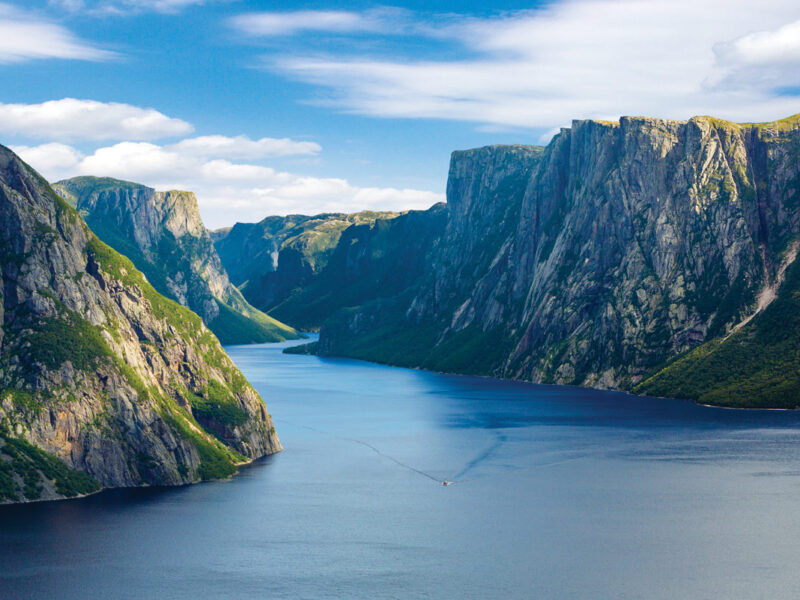
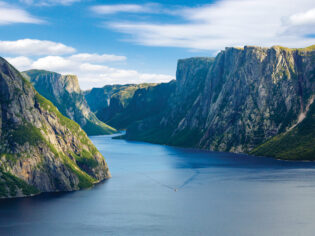
Western Brook Pond is a spectacular glacier-cut freshwater fjord. (Image: Barrett & MacKay Photo)
Extending far out beyond Canada’s lonely east coast, Newfoundland’s Gros Morne National Park protects a rugged landscape unlike anywhere else on Earth.
“This is my favourite view in the park because you can see two planets at once,” Brad Young announces as we stride forth under a clear blue sky. “You’ve got Earth to your right,” he explains, gesturing towards a granite dome poking out above thickly wooded slopes. “And then there’s Mars on the left.”
Instead of looking up to the heavens, I’m gazing in wonder at the most distinctive part of Newfoundland’s World Heritage-listed Gros Morne National Park.
The Tablelands
The Tablelands is a barren plateau that formed when two continents collided and forced Earth’s mantle up to the surface. One of only a few places in the world where you can observe this phenomenon, it played a crucial role in confirming the theory of plate tectonics but is far from fertile ground for the local fauna.
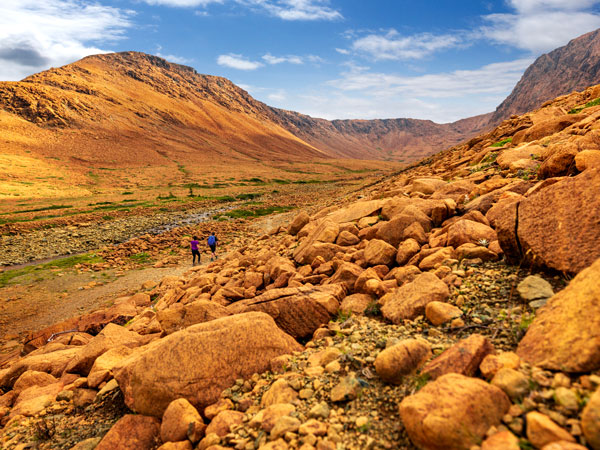
The Tablelands is a barren plateau formed by two colliding continents. (Image: Dru Kennedy)
The rocks of the Tablelands are so rich in heavy metals that “it’s basically a polluted junkyard for most plants”. Nearly 500 million years after that initial continental clash, the slopes are still almost entirely devoid of flora, save a few maroon pitcher plants that get their nutrients by capturing unwitting insects.
Instead, the iron-rich rocks have rusted to a dark orange that creates a distinctly Martian landscape. And it’s not just film crews that think so – NASA scientists have visited several times to test their Mars Exploration Rovers.
The absence of any vegetation above ankle height means it’s almost impossible to get a sense of scale as we slowly climb upwards, so I don’t realise how far we’ve ascended until I turn around. And when I do, the otherworldly appearance of the Tablelands is amplified by the contrast between the bare orange rock and the rest of the park. Below me, the cobalt-blue waters of Bonne Bay fjord split into two arms that stretch out towards jagged mountain peaks, broad grassy meadows and dense forests of spruce, larch, balsam and fir.
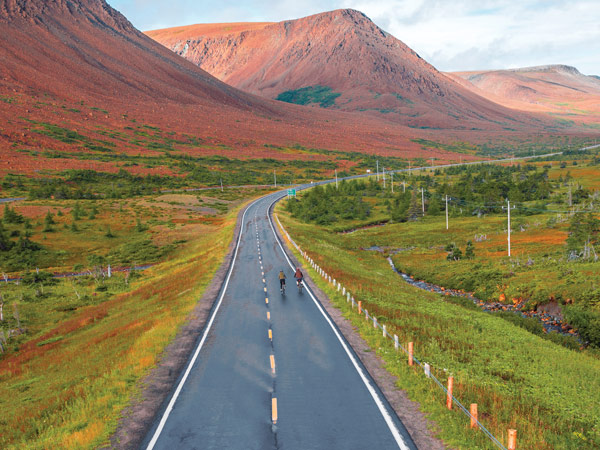
The red landscape is made up of the Earth’s exposed mantle. (Image: Barrett & MacKay Photo)
An eye-popping landscape
I’m visiting as part of World Expeditions’ Gros Morne Adventure, a week-long walking trip that takes me to the heart of this remote and staggeringly beautiful park perched high up on the north-western tip of Newfoundland. Adrift in the wild Atlantic Ocean, this remote island didn’t join Canada until 1949 and the locals still have a fiercely independent streak and take evident pride in the beauty of their surroundings.
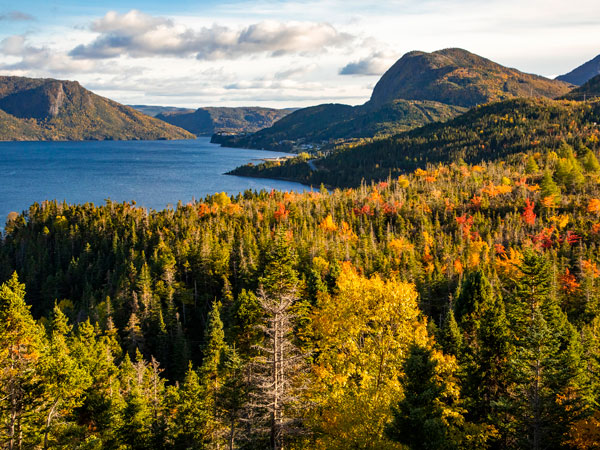
Bask in the colours of fall at Newfoundland’s Gros Morne National Park.
“How can you tell the Newfoundlanders in heaven?” Brad asks at one point, before hitting us with the punchline: “They’re the ones who want to go home.” A long-time local who lives in a cabin in the woods and refers to nearby Corner Brook (pop. 20,000) as a big city, he’s equipped with an endless supply of one-liners delivered in the broad maritime accent of a Bostonian who’s just had a shot of Novocaine to the gums.
One of the features of the local dialect is that any body of water between two metres and 20 kilometres across is a pond (pronounced “pahnd”), and by far the most beautiful is Western Brook Pond. In any other place this would be the headline act, a stunningly beautiful freshwater fjord gouged from towering cliffs of weathered granite and gneiss that disappear into the clouds.
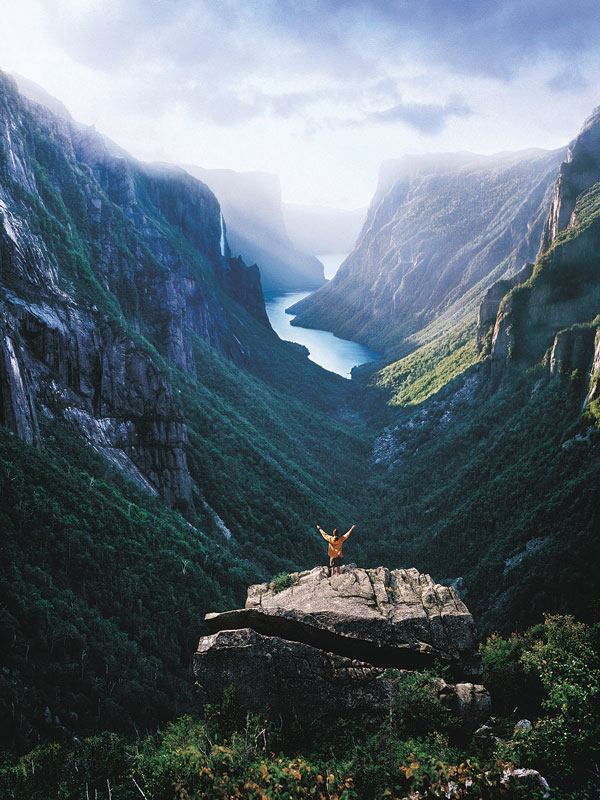
Hike to the top of Western Brook Pond for dramatic views.
Lush forests and freshwater fjords
Even in late June, patches of white dot the upper reaches and the snowmelt feeds roaring waterfalls that rush down the cliff faces in billowing clouds. And, like the Tablelands, this is a peculiarly harsh environment; the small drainage basin and non-reactive granite keep the water so pure that it won’t conduct electricity and it lacks the nutrients to support much marine life.
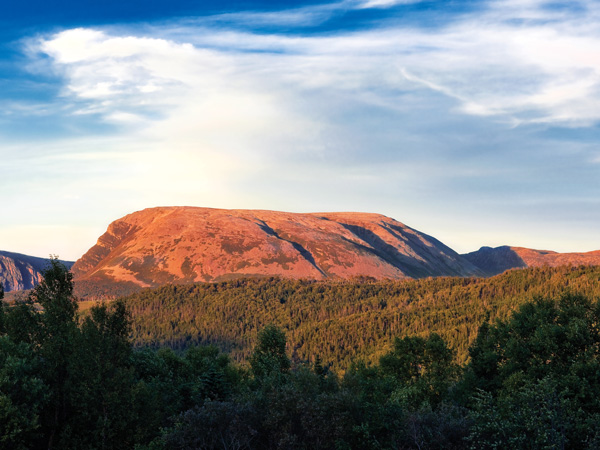
Light touches the granite dome of Gros Morne Mountain. (Image: Barrett & MacKay Photo)
Fortunately, not all our surroundings are so unforgiving. For 500 years Newfoundland was the base for fishers plying the Grand Banks, one of the richest fishing grounds in the world, and each night after our walk we have a chance to sample the sea’s bounty.
We feast on sweet, pickled herring and plump steamed mussels in the idyllic fishing community of Trout River, tuck into pan-fried cod in a former fishing loft and taste the most famous local catch prepared in every way imaginable. There are lobster dumplings, lobster bisque, whole lobsters and even the scallop and shrimp risotto is garnished with lobster caviar.
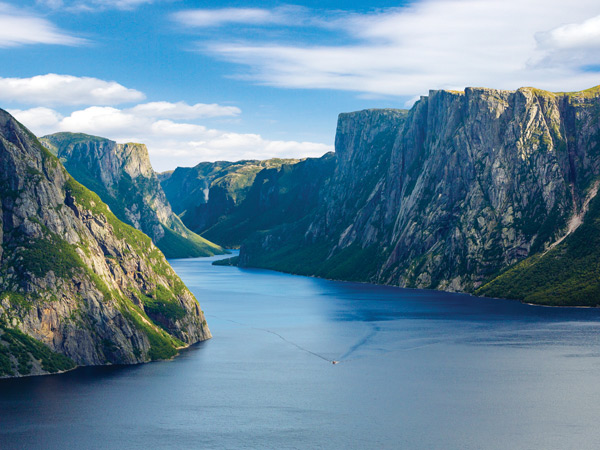
Western Brook Pond is a spectacular glacier-cut freshwater fjord. (Image: Barrett & MacKay Photo)
Coastal walking trails
I’m sure that eventually I’d tire of such a diet, but that would take far longer than a single week. And while a daily dose of lobster sounds like gold-plated opulence, the real luxury of this trip lies in its intimate scale. Walking groups are limited to six people, which means we can fit around a table at even the cosiest local restaurants. And that size makes it easy to take in the natural beauty undisturbed on our daily walks that range from eight to 16 kilometres, each taking us into an entirely new environment.
Coastal trails pass forests of wind-blasted “tuckamore” trees that grow almost sideways to form impenetrable tangles of branches. And a bank of fossil-rich shale stands vertically above a rocky beach at Green Point. “Every layer is like a page in a story,” our guide tells us, “and one millimetre represents 100 years of sedimentation. That means each step you take along the beach is like travelling 60,000 years through time.”
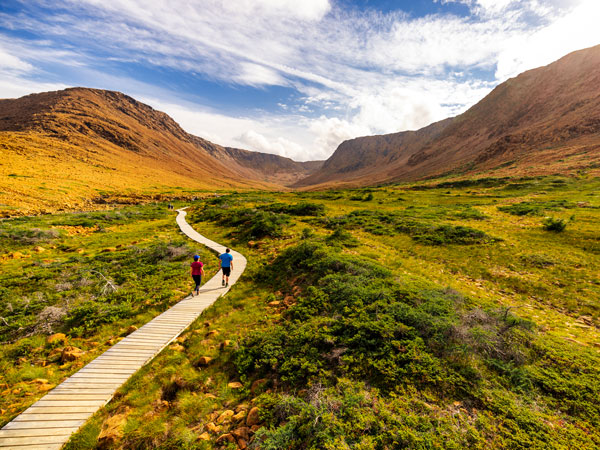
A trail through the Tablelands. (Image: Dru Kennedy)
Skyscraping peaks
At 700 metres above sea level, the aptly named Big Lookout gazes out from a flower-filled alpine bog over brooding mountain ranges, windswept volcanic beaches and glacier-carved fjords. Across the bay lies a tall granite dome erupting from a sea of trees. This is the mountain that gives the park its name, and on sunny days Brad says the quartzite that covers the upper sections turns it into “a sheet of glass in the middle of the forest”.
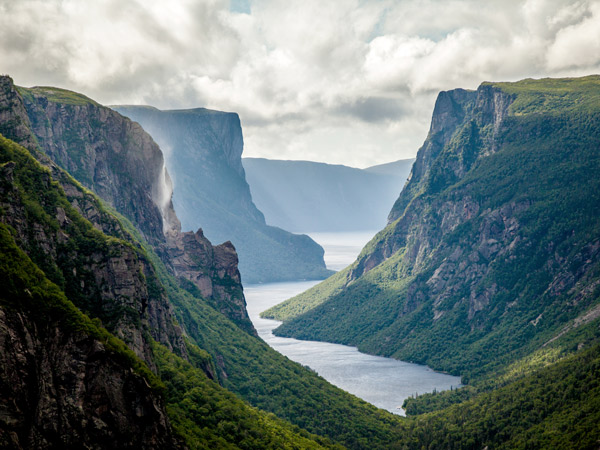
This national park in north-west Newfoundland is UNESCO-listed.
Gros Morne Inn
And yet none of these can compete with my favourite view of the park. That would be from Gros Morne Inn, the former hunting lodge perched above the charming town of Woody Point that serves as our home for the week.
I head to one of the cedar hot tubs looking out over Bonne Bay each night after dinner, determined to stay up and see what I am certain will be epic night skies. But the rich lobster dinners and days that seem to stretch out indefinitely so close to the summer solstice mean that I’m always asleep long before the stars come out.
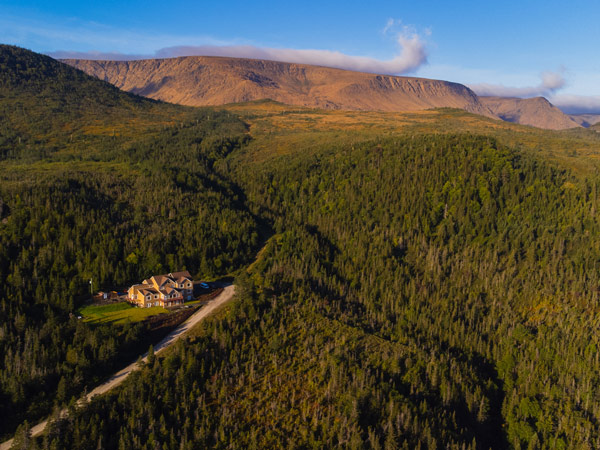
Gros Morne Inn from above.
Under my goose-down doona, I dream of being a child in Adelaide and trying to dig a hole all the way to China, a notion that seems even more fanciful now than it did then. In truth, I’d have to dig deeper than anyone ever has just to reach the Earth’s mantle, and if I kept going I’d eventually pop out somewhere off the coast of Newfoundland.
The island’s largest settlement, St Johns, lies 18,320 kilometres away from my hometown. But even that doesn’t fully capture just how remote it is. Gros Morne doesn’t just feel like another planet; it contains multiple worlds, each of them somehow more beautiful than the last.
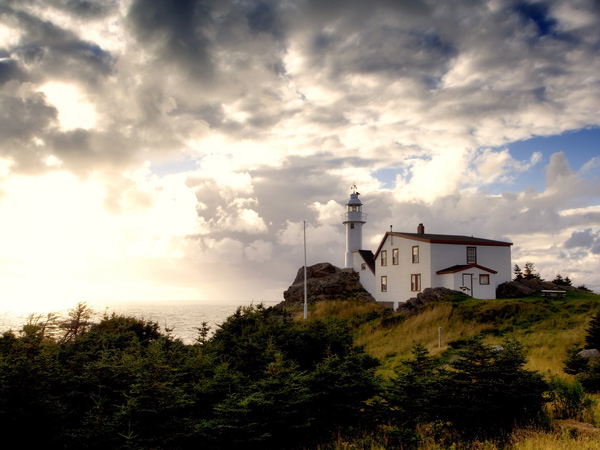
Climb up the Lobster Cove Head Lighthouse.
Conscious traveller
Gros Morne Inn co-owner Rebecca Brushett is a marine biologist and founder of AHOI (Atlantic Healthy Oceans Initiative), a non-profit that conducts marine life surveys, clears marine debris and upcycles it into building materials. All the seafood on the Inn’s seasonal menu is Ocean Wise-certified and the kitchen uses locally sourced produce wherever possible (including jam made by the local mayor).
Newfoundland’s remoteness makes waste management an important issue, so locally made soap, shampoo and conditioner all come in bar form to eliminate packaging, and the Inn is on the path to becoming an entirely waste-free business. For now, all recycling categories are weighed and measured and thin plastic that can’t be recycled is turned into eco-bricks for future construction projects.
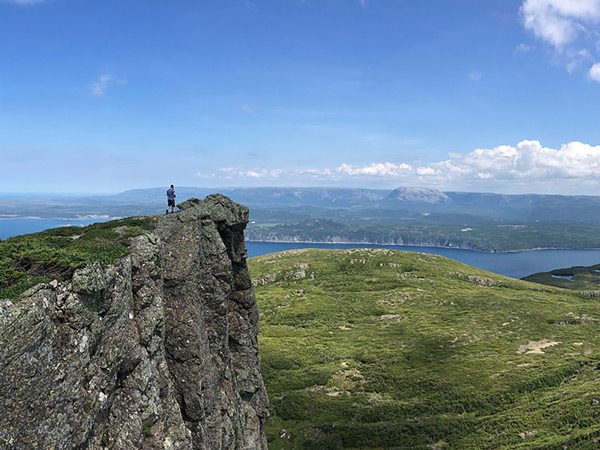
The Big Lookout offers spectacular views of The Tablelands.
A traveller’s checklist:
The seven-day Gros Morne Adventure runs between June and September and includes airport transfers, guides, accommodation and all meals.
Getting there
Guests are picked up from Deer Lake Regional Airport, which has multiple daily connections to Toronto, Montreal and Halifax.
Staying there
The base package includes accommodation at Bonne Bay Inn, with an option to upgrade to Gros Morne Inn.
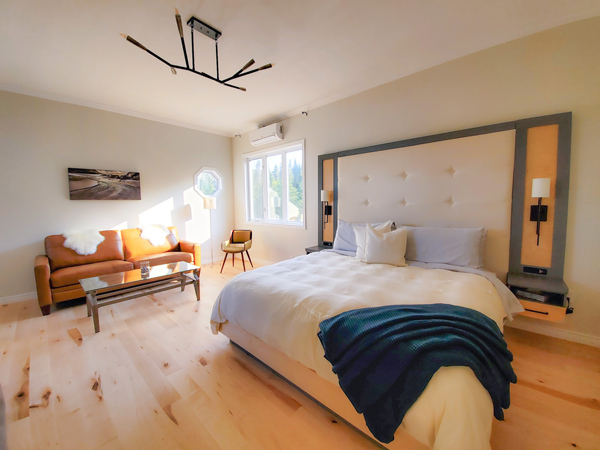
Sleep in the Gros Morne Inn king room.
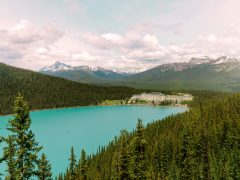
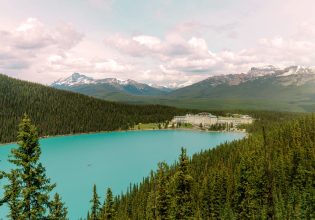

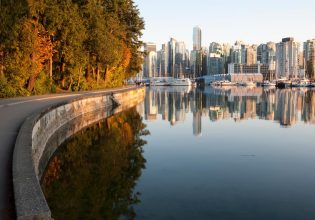
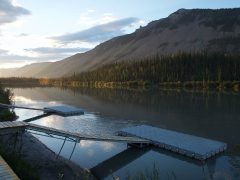
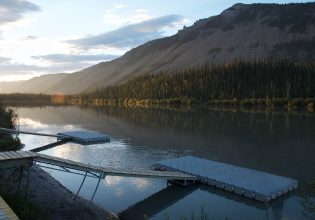

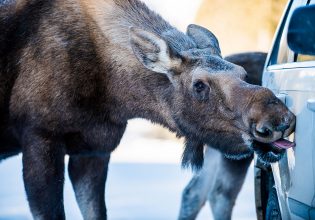
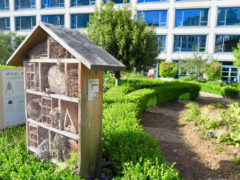
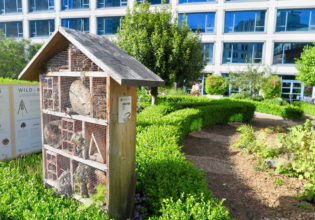



Gros Morne, truly a beautiful NP. We spent 3 wonderful weeks in Newfoundland, it is spectacular.